Configuring Linux Host for iSCSI with NGX Storage Unified Series

This document covers the configuration and best practices to configure iSCSI in Linux. In this example, we used Red Hat Enterprise Linux 8, but this procedure also works on Pardus, Ubuntu, Debian, openSUSE , SLES, Rocky Linux systems. When running below commands, replace the IPs and the IQNs with those from your own environment.
Linux Host Configuration
1. Make sure that you are following NGX Storage Linux Recommended Settings before proceeding.
2. Install the iscsi-initator package as the root user:
For RHEL / CentOS / Rocky :
# yum install iscsi-initiator-utils
For Ubuntu / Debian / Pardus :
# apt-get install open-iscsi
For SLES / openSUSE :
# zypper -n install open-iscsi
3. Configure /etc/iscsi/iscsid.conf for optimal performance.
To control how many commands the session will queue, set it to; node.session.cmds_max=256 To control the device's queue depth, set it to; node.session.queue_depth=128
4. Start the iscsi service and enable it to start when the system boots:
For RHEL / CentOS / Rocky :
# systemctl start iscsid.service
For Ubuntu / Debian / Pardus :
# systemctl enable open-iscsi # systemctl enable iscsid
5. Install and enable Device Mapper Multipathing.
For RHEL / CentOS / Rocky :
# yum install device-mapper-multipath device-mapper-multipath-libs # mpathconf --enable --with_multipathd y
For Ubuntu / Debian / Pardus :
# apt-get install multipath-tools # systemctl start multipath-tools.service
NGX Storage iSCSI Target Configuration
1. From each controller at least 1 IP, a total of 2 IP addresses should be assigned for iSCSI connectivity.
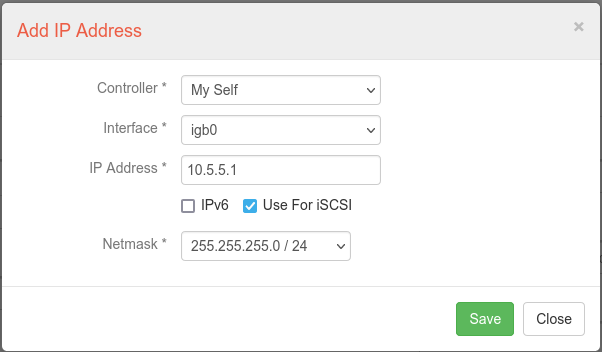
2. Add a new portal group under SAN->Portal Group section.
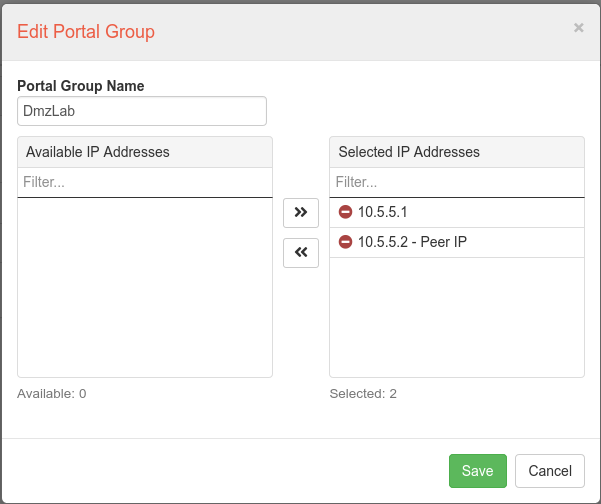
3. Collect the IQN from the Linux host:
# cat /etc/iscsi/initiatorname.iscsi
4. Add a new auth group under SAN-> Authentication Groups section.
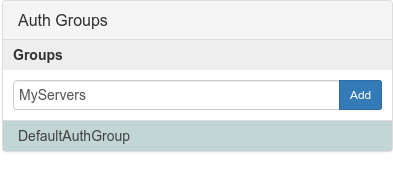
5. Configure auth group with collected Linux IQN:
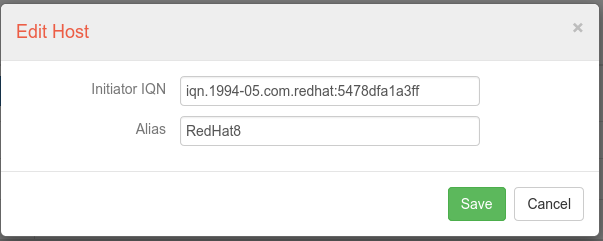
6. Map LUNs to target under SAN-> iSCSI Targets menu:
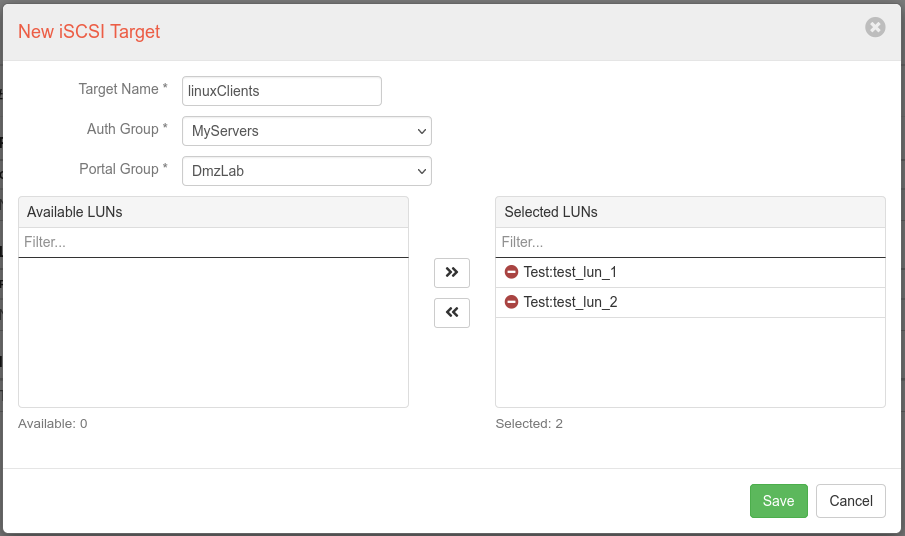
Now, you can see iSCSI target information from the GUI:

7. On the Linux host, discover the target iSCSI portals for both controllers:
# iscsiadm -m discovery -t st -p <NGX Storage SP-A IP> # iscsiadm -m discovery -t st -p <NGX Storage SP-B IP> <NGX Storage SP-A/B> is the iSCSI interface IP address that was assigned to controllers.
# iscsiadm -m discovery -t st -p 10.5.5.1 10.5.5.1:3260,257 iqn.2015-03.com.ngxio.barisabc123:linuxclients # iscsiadm -m discovery -t st -p 10.5.5.2 10.5.5.2:3260,257 iqn.2015-03.com.ngxio.barisabc123:linuxclients
8. From your Linux host, log in to the NGX Storage iSCSI targets on both controllers:
# iscsiadm -m node -p <NGX Storage SP-A IP> --login # iscsiadm -m node -p <NGX Storage SP-B IP> --login
9. Enable automatic iSCSI login on boot:
# iscsiadm -m node -L automatic
10. Edit /etc/multipath.conf file with NGX Storage recommended multipath parameters:
defaults {
polling_interval 5
user_friendly_names yes
}
devices {
device {
vendor "NGX-IO.*"
product "NGX-IO ISCSI"
path_grouping_policy group_by_prio
prio alua
path_checker tur
failback immediate
no_path_retry queue
flush_on_last_del yes
dev_loss_tmo infinity
detect_prio yes
}
}
multipaths {
multipath {
wwid 3589c00 ...
alias lun1
}
multipath {
wwid 3589c00 ...
alias lun2
}
multipath {
wwid 3589c00 ...
alias lun3
}
multipath {
wwid 3589c00 ...
alias lun4
}
}
In this example our multipath.conf is shown below.
defaults { polling_interval 5 user_friendly_names yes } devices { device { vendor "NGX-IO.*" product "NGX-IO ISCSI" path_grouping_policy group_by_prio prio alua path_checker tur failback immediate no_path_retry queue flush_on_last_del yes dev_loss_tmo infinity detect_prio yes } } multipaths { multipath { wwid 3589c005ff10bc53a6c89713c58ce53be alias test_lun_1 } multipath { wwid 3589c0036d18678d1674c2dc0fbbe1e44 alias test_lun_2 } }
11. Restart multipathd service after modifying multipath.conf to changes effect.
# service multipathd restart
See RHEL documentation for multipath.conf attribute descriptions.
According to https://access.redhat.com/solutions/3234761, if you are using RHV-H, multipath configuration must include user_friendly_names no.
12. On the Linux host confirm volumes are presented with multiple paths:
# multipath -ll test_lun_2 (3589c0036d18678d1674c2dc0fbbe1e44) dm-3 NGX-IO,NGX-IO ISCSI size=100G features='1 queue_if_no_path' hwhandler='1 alua' wp=rw |-+- policy='service-time 0' prio=50 status=active | `- 3:0:0:1 sde 8:64 active ready running `-+- policy='service-time 0' prio=10 status=enabled `- 4:0:0:1 sdd 8:48 active ready running test_lun_1 (3589c005ff10bc53a6c89713c58ce53be) dm-2 NGX-IO,NGX-IO ISCSI size=100G features='1 queue_if_no_path' hwhandler='1 alua' wp=rw |-+- policy='service-time 0' prio=50 status=active | `- 3:0:0:0 sdc 8:32 active ready running `-+- policy='service-time 0' prio=10 status=enabled `- 4:0:0:0 sdb 8:16 active ready running
13. Now you can provision a filesystem on the dm device using the device name. If the user_friendly_names parameter is no you can use device-mapped ID.
# mkfs.ext4 /dev/mapper/test_lun_1 mke2fs 1.45.4 (23-Sep-2019) Creating filesystem with 26214400 4k blocks and 6553600 inodes Filesystem UUID: 4be58f5f-174e-4c21-9152-ef769f3d4b66 Superblock backups stored on blocks: 32768, 98304, 163840, 229376, 294912, 819200, 884736, 1605632, 2654208, 4096000, 7962624, 11239424, 20480000, 23887872 Allocating group tables: done Writing inode tables: done Creating journal (131072 blocks): done Writing superblocks and filesystem accounting information: done
Reference Links
- RHEL Configuring an iSCSI initiator
- Ubuntu iSCSI Initiator
- Device Mapper Multipathing – Introduction
COPYRIGHT
© 2022 NGX Teknoloji A.Ş. (NGX Storage). All rights reserved. Printed in the Turkey. Specifications subject to change without notice. No part of this document covered by copyright may be reproduced in any form or by any means-graphic, electronic, or mechanical, including photocopying, recording, taping, or storage in an electronic retrieval system-without prior written permission of NGX Storage. Software derived from copyrighted NGX Storage material is subject to the following license and disclaimer:
THIS SOFTWARE IS PROVIDED BY NGX Storage “AS IS” AND WITHOUT ANY EXPRESS OR IMPLIED WARRANTIES, INCLUDING, BUT NOT LIMITED TO, THE IMPLIED WARRANTIES OF MERCHANTABILITY AND FITNESS FOR A PARTICULAR PURPOSE, WHICH ARE HEREBY DISCLAIMED. IN NO EVENT SHALL NGX Storage BE LIABLE FOR ANY DIRECT, INDIRECT, INCIDENTAL, SPECIAL, EXEMPLARY, OR CONSEQUENTIAL DAMAGES (INCLUDING, BUT NOT LIMITED TO, PROCUREMENT OF SUBSTITUTE GOODS OR SERVICES; LOSS OF USE, DATA, OR PROFITS; OR BUSINESS INTERRUPTION) HOWEVER CAUSED AND ON ANY THEORY OF LIABILITY, WHETHER IN CONTRACT, STRICT LIABILITY, OR TORT (INCLUDING NEGLIGENCE OR OTHERWISE) ARISING IN ANY WAY OUT OF THE USE OF THIS SOFTWARE, EVEN IF ADVISED OF THE POSSIBILITY OF SUCH DAMAGE.
NGX Storage reserves the right to change any products described herein at any time, and without notice. NGX Storage assumes no responsibility or liability arising from the use of products described herein, except as expressly agreed to in writing by NGX Storage. The use or purchase of this product does not convey a license under any patent rights, trademark rights, or any other intellectual property rights of NGX Storage.
TRADEMARK
NGX Storage and the NGX Storage logo are trademarks of NGX TEKNOLOJI A.Ş. Other company and product names may be trademarks of their respective owners.